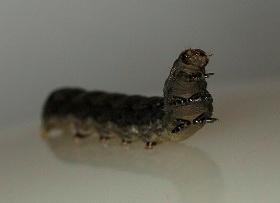Using AI to control energy for indoor agriculture
30 September 2024
Published online 20 September 2012

Sex pheromones are compounds released by some adult species to seduce members of the opposite sex, or at least that was their definition. Researchers from France and University Abdelmalek Essaadi in Larache, Morocco, have found a peculiar power of a sex pheromone in moths.
The study on the cotton leafworm Spodoptera littoralis shows that caterpillars, of all ages and both sexes, are attracted to food that has been mixed with the sex pheromone of their own species. The results are published in Nature Communications.
In the moth, the sex pheromone is detected by pheromone-binding proteins which transfer the signal to pheromone receptors. The caterpillars, despite lacking pheromone receptors, have the pheromone-binding-proteins which transfer the signal to their olfactory neurons within their antennae.
This is most probably an ability that evolved in some caterpillars to find appropriate food. Plant odours may be too complicated for a caterpillar to recognize, so following the sex pheromones left by moths is a simpler proposition.
Caterpillars learn from the experience of feeding, and it is likely that the plants on which they hatched and first fed were mixed with the sex pheromones of the female that laid the eggs, making it a preference for them.
This behavior may be used to improve insect pest control to protect crops from caterpillars. "For example, adding sex pheromone to food traps may enhance caterpillar attraction and thus destruction," explains Emanuelle Jacquin-Joly, of the French agricultural research institute INRA in Versailles and one of the paper's authors.
The researchers plan to investigate whether this behavior is innate or learnt, and if it applies to other species.
doi:10.1038/nmiddleeast.2012.136
Stay connected: